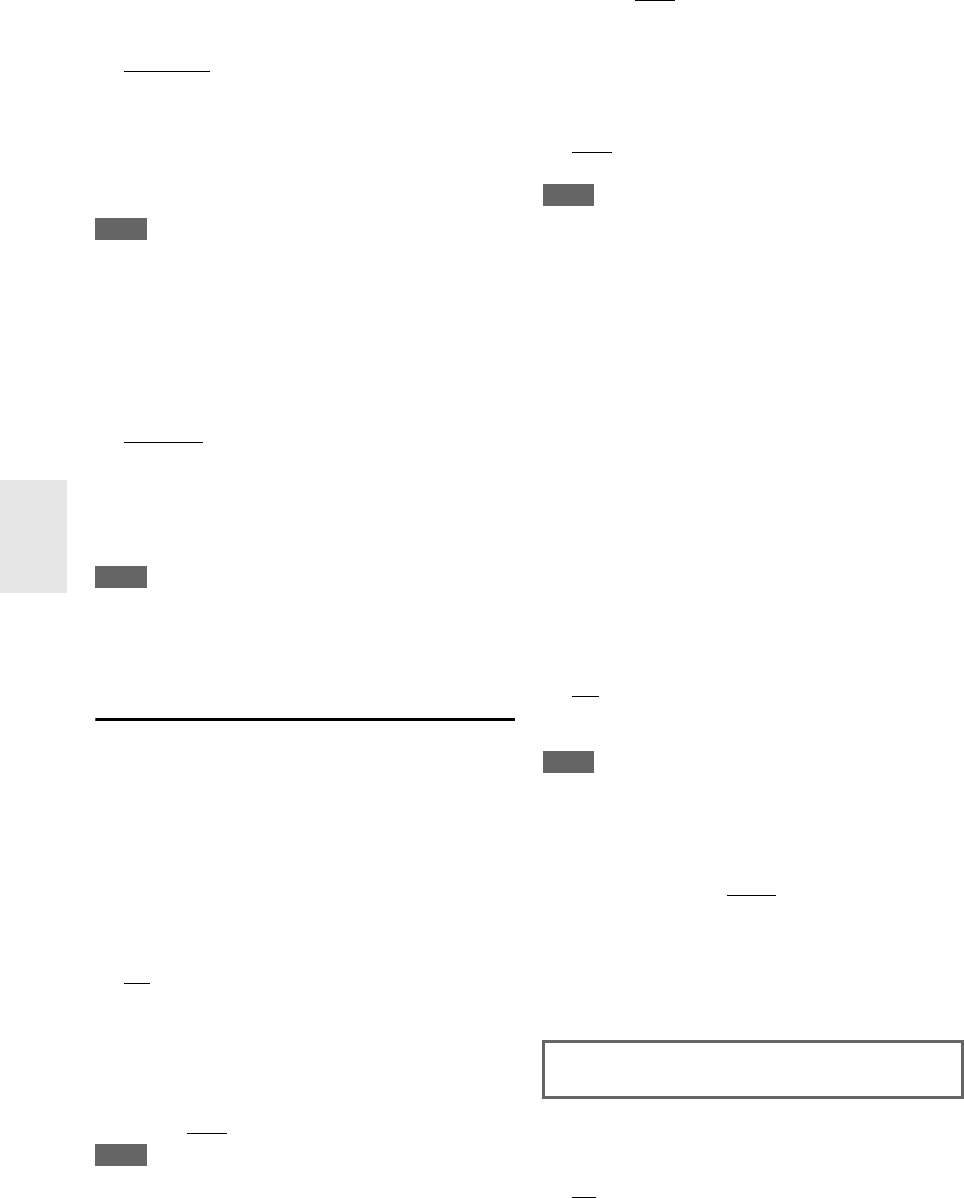
36
En
■ Speaker Terminal Assign
Front High/Front Wide/Zone2
With this setting, you can specify the speakers con-
nected to FRONT HIGH OR FRONT WIDE OR
ZONE 2 SPEAKERS terminals.
`Front High
:
Front high speakers can be used.
`Front Wide:
Front wide speakers can be used.
`Zone2:
Zone 2 speakers can be used (Powered Zone 2
enabled).
Note
•If the “Speakers Type” setting is set to “Bi-Amp”, Powered
Zone 2 cannot be used.
•If “Front Wide” is selected in the “SurrBack/Front High/
Front Wide” setting, you cannot select “Front Wide” here.
SurrBack/Front High/Front Wide
With this setting, you can specify the speakers con-
nected to SURR BACK OR FRONT HIGH OR
FRONT WIDE SPEAKERS terminals.
`Surr Back
:
Surround back speakers can be used.
`Front High:
Front high speakers can be used.
`Front Wide:
Front wide speakers can be used.
Note
•If the “Speakers Type” setting is set to “Bi-Amp”, Powered
Zone 2 cannot be used.
•If “Front High” is selected in the “Front High/Front Wide/
Zone2” setting, you cannot select “Front High” here.
Speaker Configuration
With these settings, you can specify which speakers are
connected and a crossover frequency for each speaker.
Specify “Full Band” for speakers that can output low fre-
quency bass sounds adequately, for example, speakers
with a good sized woofer. For smaller speakers, specify a
crossover frequency. Sounds below the crossover fre-
quency will be output by the subwoofer instead of the
speaker. Refer to your speaker’s manuals to determine the
optimum crossover frequencies.
■ Subwoofer
`Ye s
:
Select if a subwoofer is connected.
`No:
Select if no subwoofer is connected.
■ Front
`Full Band
`40Hz to 80Hz
to 100Hz, 120Hz, 150Hz, 200Hz
Note
•If the “Subwoofer” setting is set to “No”, the “Front” setting is
fixed at “Full Band”.
■ Center
*1
, Surround
*1
, Surr Back
*2*3*4*5
`Full Band
`40Hz to 80Hz
to 100Hz, 120Hz, 150Hz, 200Hz
`None:
Select if no speaker is connected.
■ Front Wide
*1*2*4*6
, Front High
*1*2*4*7
`Full Band
`40Hz to 80Hz to 100Hz, 120Hz, 150Hz, 200Hz
`None
:
Select if no speaker is connected.
Note
*1
“Full Band” can be selected only when “Full Band” is
selected in the “Front” setting.
*2
If the “Surround” setting is set to “None”, this setting cannot
be selected.
*3
If the “Surround” setting is set to anything other than “Full
Band”, “Full Band” cannot be selected here.
*4
If the “Speakers Type” setting is set to “Bi-Amp” (➔ 35), or
Powered Zone 2 is being used (➔ 49), this setting cannot be
selected.
*5
If you have selected other than “Surr Back” in the “Surr-
Back/Front High/Front Wide” setting, this setting cannot be
selected.
*6
If you have selected other than “Front Wide” in the “Front
High/Front Wide/Zone2” or “SurrBack/Front High/Front
Wide” setting, this setting cannot be selected.
*7
If you have selected other than “Front High” in the “Front
High/Front Wide/Zone2” or “SurrBack/Front High/Front
Wide” setting, this setting cannot be selected.
■ Surr Back Ch
`1ch:
Select if only one surround back speaker L is con-
nected.
`2ch
:
Select if two (left and right) surround back speakers
are connected.
Note
•If the “Surr Back” setting is set to “None” (➔ 48), this setting
cannot be selected.
■ LPF of LFE
(Low-Pass Filter for the LFE Channel)
`80Hz, 90Hz, 100Hz, 120Hz
With this setting, you can specify the cutoff frequency
of the LFE channel’s low-pass filter (LPF), which can
be used to filter out unwanted hum. The LPF only
applies to sources that use the LFE channel.
■ Double Bass
With the Double Bass function, you can boost bass out-
put by feeding bass sounds from the front left, right, and
center channels to the subwoofer.
`On
:
Double Bass function on.
`Off:
Double Bass function off.
This setting is set automatically by Audyssey 2EQ
®
Room Correction and Speaker Setup function (➔ 22).


















